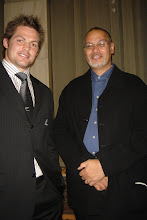In only a few years much had changed. Thousands more settlers had arrived with an eye on Maori 'wastelands' and little patience with Government efforts to treat Maori fairly. Maori for their part had decided to unite in their desire to hold onto their lands and had chosen a King to represent them and their wish to remain economically and politically separate.
Maori and Pakeha relations had changed with the Settlers determined to enforce the dominance of the British empire and their right to wastelands. Maori for their part appear determined to retain control of their lands, and Greys platitudes no longer worked.Grey wanted to attack the King but lacked necessary resources. In particular he needed more troops. He could get some troops from local militia but not the thousands of professional troops he wanted.
 Grey had seen the Wars in the North and Taranaki falter and fail because of a lack of logistical suport and a lack of manpower. To create a sound infrastructure for an invasion he constructed the Great South Road. This led directly from Auckland to the banks of the Mangatawhiri Stream.
Grey had seen the Wars in the North and Taranaki falter and fail because of a lack of logistical suport and a lack of manpower. To create a sound infrastructure for an invasion he constructed the Great South Road. This led directly from Auckland to the banks of the Mangatawhiri Stream.A regiment could now disembark at Queen Wharf (todays 'Party Central') and virtually march directly into battle if necessary.. Grey just needed the troops.The Imperial Government would not give him soldiers without good reason. Grey had no valid reason so he lied. Then he lied some more, and some more.
In the ‘wars’ video Belich mentions the drunken rambling of the Maori called Whare who talked about a planned attack by Maori and French collaborators on Auckland. It was this ‘threat’ that Grey continued to hammer on about, much as Busby had harped on about the French threat in the 1830’s. Why the Maori would attack their best market Grey never explained. What they would achieve by driving the Pakeha out of New Zealand was never explained. However I guess within the Colonial Office the idea that natives might resent them and want to kill them wasn’t far from their thoughts (of course they would be confirmed in the Indian Mutiny of 1857). So the Colonial Office sent troops, lots and lots of troops. Thousands of troops.
As 1862 moved into 1863 Greys war machine grew,The Government for its own part took out a £3m loan secured by the promise of confiscated lands. It recruited troops from Australia on the promise of free land. (The 'Fencibles' ) While Dommett was Premier he was supported by Russell and Whitaker land speculators who pushed hard for the war and would profit spectacularly from the confiscations. Unfortunately many of the fencibles would receive land that was almost unworkable for poor farmers. Russell and Whitaker would buy up much of this land later for a pittance.
 So Grey assured Maori he did not seek war but would ‘dig around the King’. Meanwhile he built his army and then built the Great South Road pointing into the heart of the Waikato. Once he had an army capable of defeating the King, Grey set about starting the war. The Mangatawhiri Stream lay on the Kings Rohe (border), north was settler Auckland, south was the Kingitanga.
So Grey assured Maori he did not seek war but would ‘dig around the King’. Meanwhile he built his army and then built the Great South Road pointing into the heart of the Waikato. Once he had an army capable of defeating the King, Grey set about starting the war. The Mangatawhiri Stream lay on the Kings Rohe (border), north was settler Auckland, south was the Kingitanga.Crossing the stream meant war. In July Cameron crossed the stream but Grey backdated the declaration that any Maori who did not acknowledge the Queens authority would be in rebellion. When Maori resisted at Koheroa just south of the Mangatawhiri the Waikato War had started.




No comments:
Post a Comment